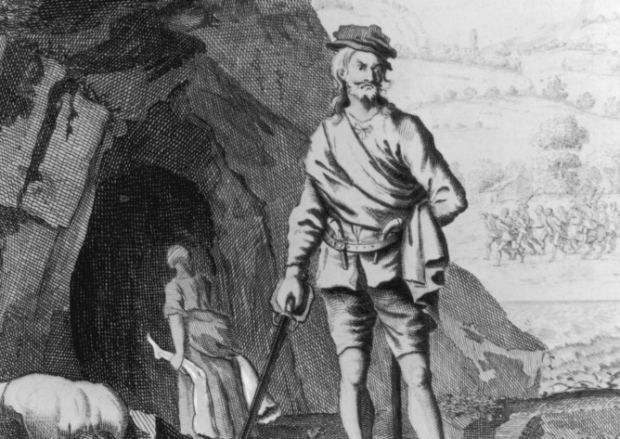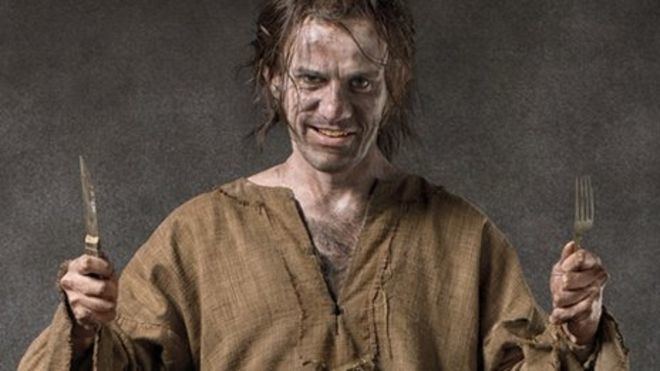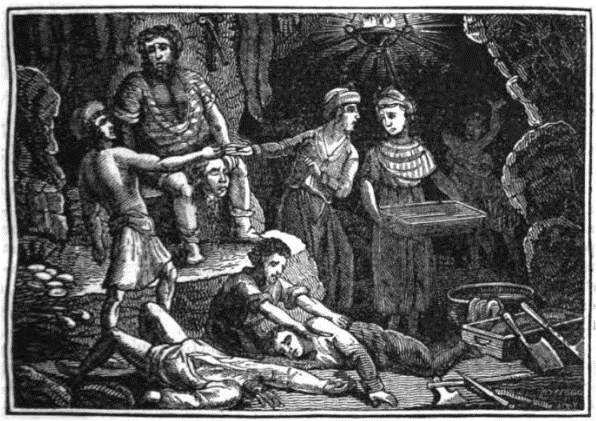Full Name Alexander Bean Other names Sawney | Children 14 Name Sawney Bean | |
 | ||
Similar People David Hayman, Anneliese Michel, Wes Craven, Ed Gein, Susan Lanier | ||
Sawney bean s cave ten minute tour
Alexander "Sawney" Bean was said to be the head of a 48-member clan in Scotland anywhere between the 13th and 16th centuries, reportedly executed for the mass murder and cannibalisation of over 1,000 people.
Contents
- Sawney bean s cave ten minute tour
- Sawney bean the scottish cannibal killer ghastly tales of scotland documentary
- Legend
- References

The story appears in The Newgate Calendar, a crime catalogue of Newgate Prison in London. While historians tend to believe Bean never existed or his story has been greatly exaggerated, his story has passed into local folklore and become part of the Edinburgh tourism industry.

Sawney bean the scottish cannibal killer ghastly tales of scotland documentary
Legend

According to The Newgate Calendar, Alexander Bean was born in East Lothian during the 1500s. His father was a ditch digger and hedge trimmer, and Bean tried to take up the family trade but quickly realized that he had little taste for honest labour.

He left home with a vicious woman who apparently shared his inclinations. The couple ended up at a coastal cave in Bennane Head between Girvan and Ballantrae where they lived undiscovered for some twenty-five years. The cave was 200 yards deep and during high tide the entrance was blocked by water.
The couple eventually produced eight sons, six daughters, eighteen grandsons and fourteen granddaughters. Various grandchildren were products of incest. Lacking the inclination for regular labour, the clan thrived by laying careful ambushes at night to rob and murder individuals or small groups. The bodies were brought back to the cave, where they were dismembered and eaten. Leftovers were pickled, and discarded body parts would sometimes wash up on nearby beaches.
The body parts and disappearances did not go unnoticed by the local villagers, but the Beans stayed in the caves by day and took their victims at night. The clan was so secretive that the villagers were unaware of the murderers living nearby.
As more significant notice of the disappearances was taken, several organised searches were launched to find the culprits. One search took note of the telltale cave but the men refused to believe anything human could live in it. Frustrated and in a frenetic quest for justice, the townspeople lynched several innocents, and the disappearances continued. Suspicion often fell on local innkeepers since they were the last known to see many of the missing people alive.
One fateful night, the Beans ambushed a married couple riding from a fair on one horse, but the man was skilled in combat, deftly holding off the clan with sword and pistol. The clan fatally mauled the wife when she fell to the ground in the conflict. Before they could take the resilient husband, a large group of fairgoers appeared on the trail and the Beans fled.
With the Beans' existence finally revealed, it was not long before King James VI of Scotland (later James I of England) heard of the atrocities and decided to lead a manhunt with a team of 400 men and several bloodhounds. They soon found the Beans' previously overlooked cave in Bennane Head. The cave was scattered with human remains, having been the scene of many murders and cannibalistic acts.
The clan was captured alive and taken in chains to the Tolbooth Jail in Edinburgh, then transferred to Leith or Glasgow where they were promptly executed without trial; the men had their genitalia cut off, hands and feet severed, and were allowed to bleed to death; the women and children, after watching the men die, were burned alive. (This recalls, in essence if not in detail, the punishments of hanging, drawing and quartering decreed for men convicted of treason while women convicted of the same were burned.)
The town of Girvan, located near the macabre scene of murder and debauchery, has another legend about the cannibal clan. It is said that one of Bean's daughters eventually left the clan and settled in Girvan, where she planted a Dule Tree that became known as "The Hairy Tree". After her family's capture, the daughter's identity was revealed by angry locals who hanged her from the bough of the Hairy Tree.
